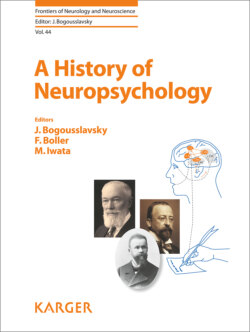Читать книгу A History of Neuropsychology - Группа авторов - Страница 36
На сайте Литреса книга снята с продажи.
Conclusions
ОглавлениеWe have discussed the introduction of assessment of emotions and behavior in neurological patients along with the understanding of frontal lobe functions. From observational and descriptive reports, behavioral measures have moved to auto- and hetero-evaluation questionnaires. It has then evolved to tasks where patients are more actively involved, resembling daily life situations. Not unexpectedly, as the assessment tools have expanded and become more specific, an increasing complexity of mechanisms underlying behavior has begun to emerge.
Behavioral assessment is nevertheless of importance since impairments are strongly related to poor outcome. Together with the interaction of pre-morbid factors such as personality and cognitive deficits, behavioral deficits diminish independent social behavior and increase social handicap [28]. However, measuring behavior directly faces the normality issue. In analogy to Mesulam questioning the existence of standards regarding behavior [4], this raises the necessity to consider an individual’s behavior in its entirety, which includes pre-morbid functioning, interindividual and cultural differences. Finally, as an encouraging perspective, it is worth noting that behavioral disorders can benefit from neurorehabilitation: both individual and group training programs have shown successful results [29, 30].
